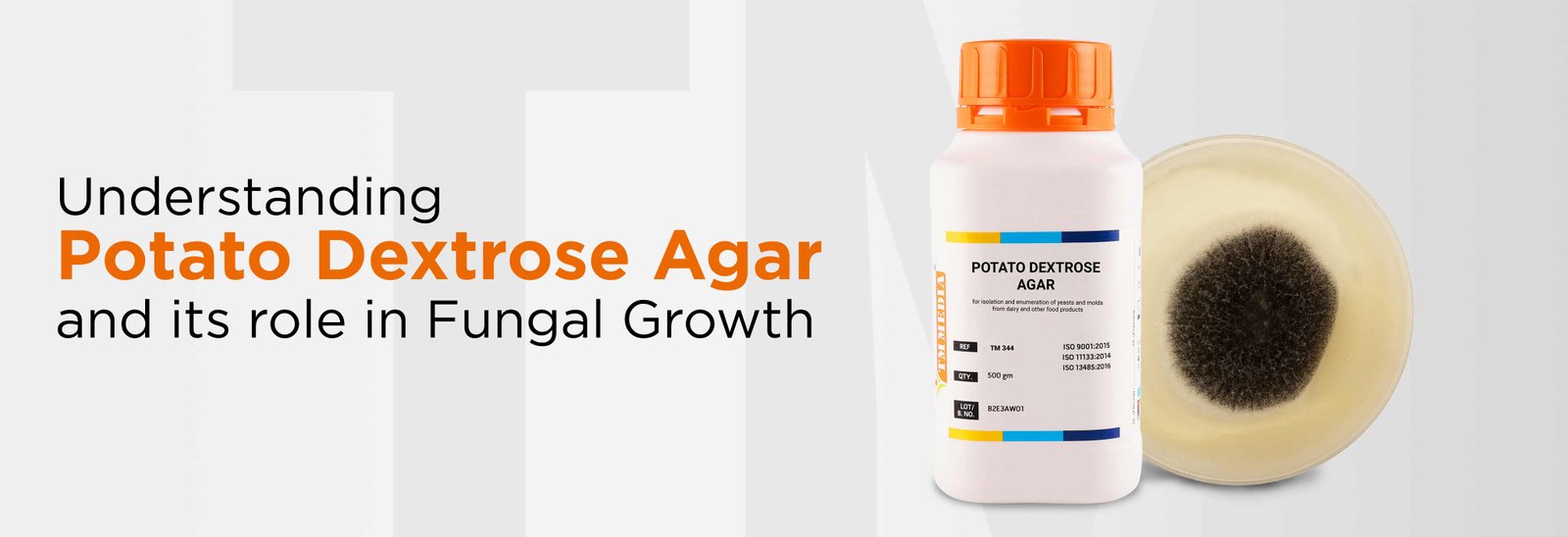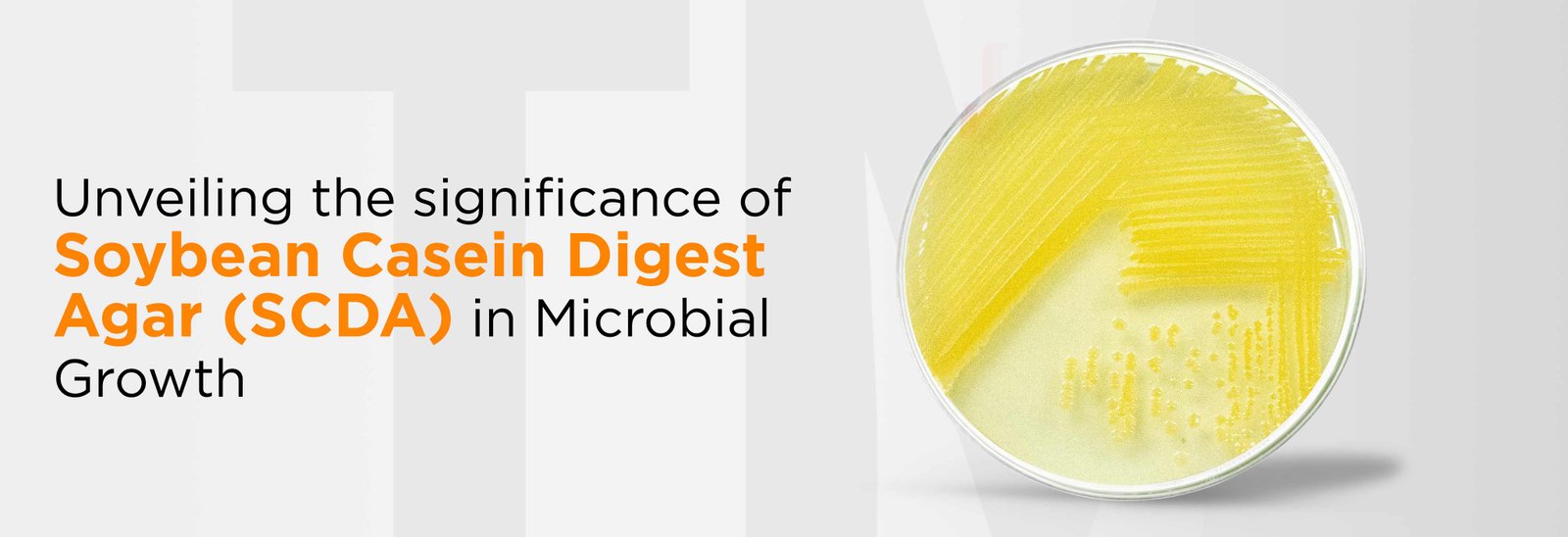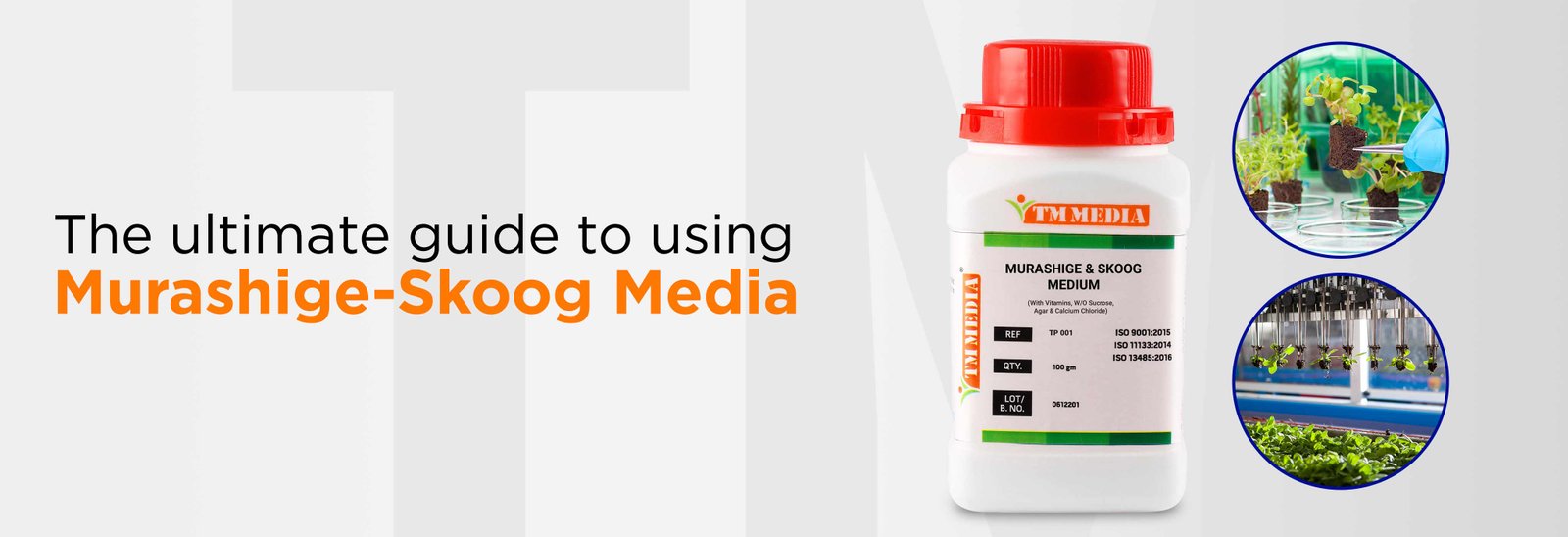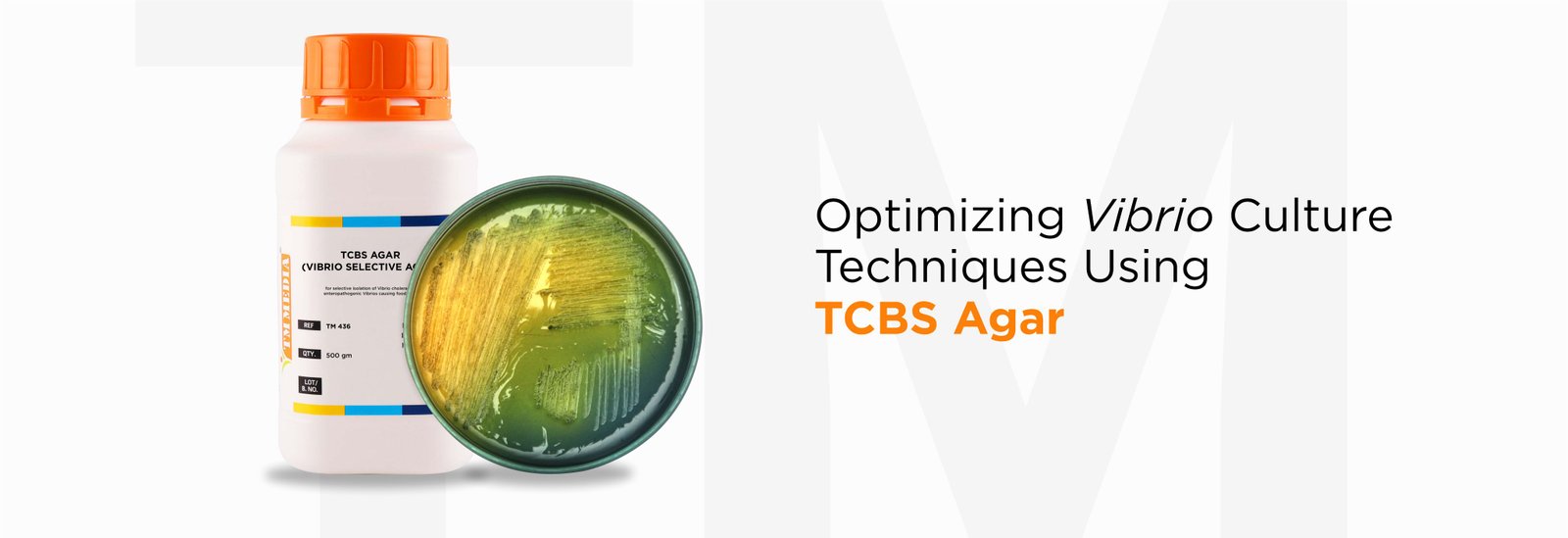

Dehydrated Culture Medium is a combination of complex nutrient substrates formulated for the cultivation of microorganisms. The components of dehydrated culture medium, must satisfy the nutritional requirements like nitrogen, carbon and trace elements of microorganisms, in order to live and replicate.
| CONSTITUENTS | SOURCE |
| Amino-Nitrogen | Peptone, Protein Hydrolysate, Infusions and Extracts |
| Energy Sources | Blood Serum, Yeast Extract or Vitamins, Nicotinamide Adenine Dinucleotide |
| Buffer Salts | Phosphates, Acetates and Citrates |
| Mineral Salts and Metal | Phosphate, Sulfate, Magnesium, Calcium, Iron |
| Selective Agents | Chemicals, Antimicrobials and Dyes |
| Indicator Dyes | Phenol Red, Neutral Red |
| Gelling Agents | Agar, Gelatine, Alginate, Silica Gel, Gellan Gum |
Features:
Benefits:
Dissolving of medium: Accurately weigh the appropriate amount of dehydrated medium. Add part of the required amount of distilled water / deionized water and swirl to dissolve. Now add remaining water from the sides of container with gentle heating to dissolve it completely. While performing it one should avoid overheating, scorching or burning.
pH adjustment: The pH value of the media shall produce the equivalent value at 25˚C as mentioned on the label. For best results, prepare the medium with distilled or deionised water only. If old material is being used, it is recommended to check pH and correct if necessary before use. pH adjustment (if required) should be carried out with 0.1N Hydrochloric Acid or Sodium Hydroxide Solution.
Sterilization: Generally, sterilization is done at 121˚C for 15 mins at 15 psi using autoclave. Volume larger than 2 ltr may require more autoclaving time to achieve proper sterilization. Colour of the media may vary from other brands but the growth of microorganisms will be same as desired.
| PRESSURE (IN PSI) | TEMPERATURE IN ˚C) | TEMPERATURE (IN ˚F) |
| 5 | 109 ˚C | 228˚F |
| 10 | 115 ˚C | 240˚F |
| 15 | 121 ˚C | 250˚F |
| 20 | 126 ˚C | 259˚F |
| 25 | 130 ˚C | 267˚F |
| 30 | 135 ˚C | 275˚F |
Note: Efficiency of the autoclave should be ascertained from time to time using various biological or chemical indicators (Refer to page 123 – 124)
Adding Enrichment and Supplement: Enrichments and Supplements are heat sensitive. Cool the medium to 45-55˚C and add enrichments or supplement to the basal medium. Mix the enrichments or supplements thoroughly.
Dispensing of the Media: Cool the agar based medium to 40-50°C and pour as desired.
For Plating : After autoclaving pour into Petri plates, place them in upright position to cool under laminar flow & immediately cover with lid.
For Broth : After dissolving the media, dispense appropriate quantity (8ml) into the tubes and then autoclave. Sterile broth may be cooled to room temperature or laminar flow as desired.
For Slant : After dissolving the media, dispense appropriate quantity (8ml) into the tubes and then autoclave. Remove from autoclave and keep in slanted position to solidify.
Storage of prepared medium: If the prepared media are not to be used within 24 hours then these should be stored at low temperature i.e. 2-8°C in moisture proof container. Do not refrigerate the medium. Petri plates should be kept in upright position. Also, it is recommended to use Paraffin and then to keep in plastic zip bags when stored at 2-8°C. Ensure it does not retain moisture.
All samples and cultures should be handled carefully and should not be discard without autoclaving. These should be discarded after autoclaving at 15 psi (121˚C) for 20 minutes. Whereas, high number of pathogenic organisms can be disastrous to mankind, hence they must be disposed off safely under the approved strict guidelines of biological safety and regulations.
Read instructions carefully given over the labels and note the best before date of each lot before use.
Confirm the physical characteristics of Dehydrated Culture Media, it should be homogenous and free flowing.
Since the Culture Media are highly hygroscopic, store them in cool (preferred below 25°C, unless and otherwise specified) and dry place.
Protect it from direct sunlight and humid place.
Ensure proper capping box after use.
Efficiency of the autoclave should be ascertained from time to time using various physical measurements or Biological/Chemicals indicators.
Avoid contaminated apparatus and glassware.
The petri plates should be sterilized by keeping washed and dried plates in oven at 150°C for 2 hours.
Never store the prepared media at 0°C.
Bring the stored media to room temperature before use or as per instructions for use.
Take care while using hazardous chemicals and use methods which reduce the risk of inhalation, ingestion and contact with skin, eyes and clothing. To avoid mis happening wear protective clothing and equipment’s.
Do not eat, drink or smoke while handling and using chemicals.
Wash hands and exposed areas thoroughly and change contaminated clothing.
Consult doctor immediately if affected by chemicals and use appropriate first aid.

Maintaining the highest standards of quality and safety is paramount in pharmaceutical manufacturing. Strict adherence to current good manufacturing practices...
Read More
Potato Dextrose Agar (PDA) is a widely utilized medium in microbiology, specifically designed for the isolation and enumeration of yeasts...
Read More
In the complicated world of microbiology, where precision and reliability are of utmost importance, Soybean Casein Digest Agar (SCDA) stands...
Read More
Have you ever wondered how scientists can grow entire plants from just a few cells in a laboratory? The answer...
Read More
In the world of pathogenic identification, one crucial player in the isolation and cultivation of Vibrio species is Thiosulfate-citrate-bile salts-sucrose...
Read MoreMicrobiology, as a scientific discipline, relies heavily on precise tools and methodologies for understanding the details of the microbial world....
Read More